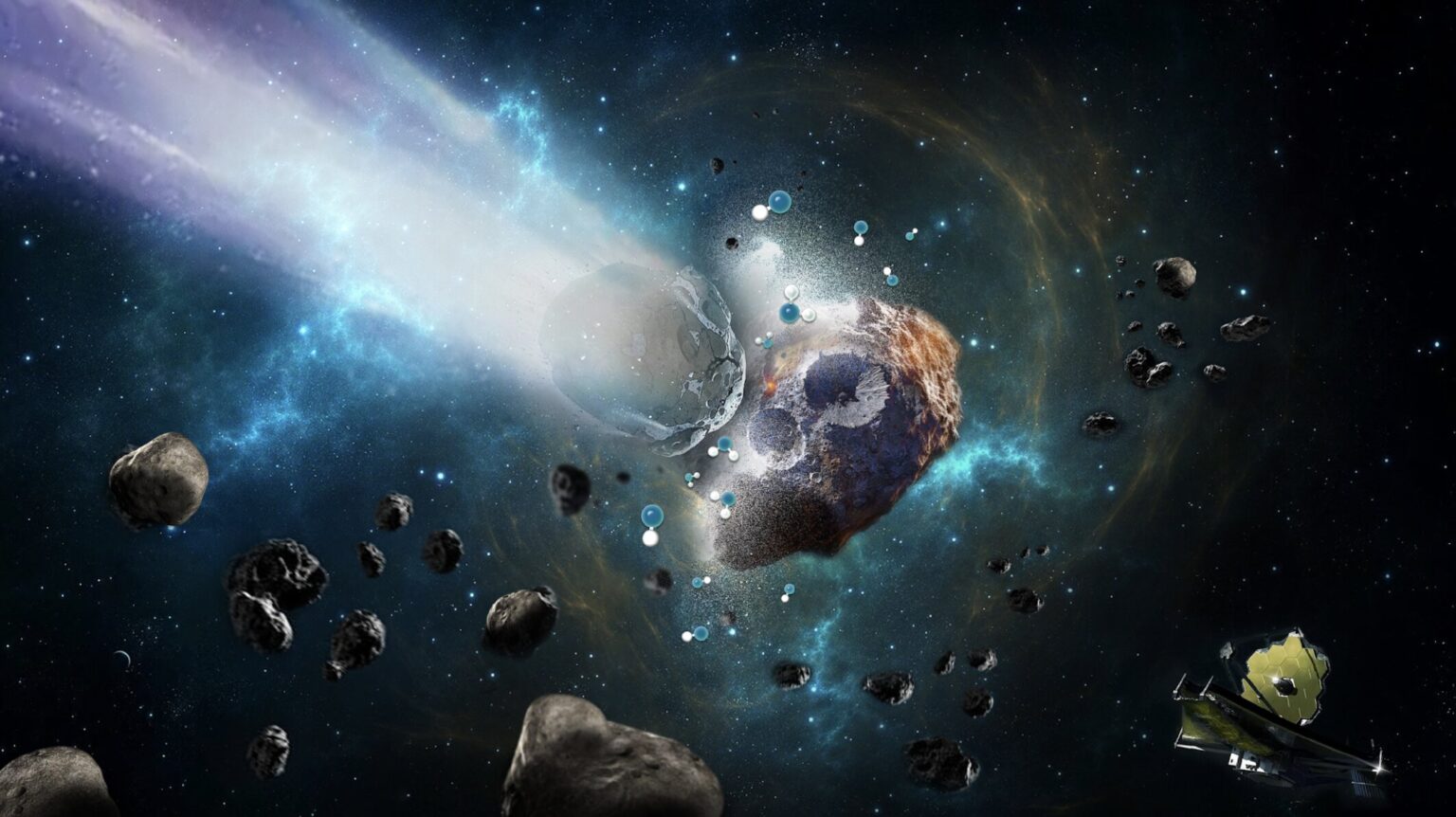Asteroid Psyche is known for containing large amounts of metal. However, evidence of hydrated rocks on its surface has recently appeared. They can be considered as traces of water once interacting with the minerals.

Hydrated minerals on asteroid
Using data from NASA’s James Webb Space Telescope, a team led by the Southwest Research Institute has confirmed the presence of hydroxyl molecules on the surface of the metallic asteroid Psyche. These traces of water reveal the asteroid’s complex history, and are important in the context of NASA’s Psyche spacecraft, which is now heading toward this body orbiting the Sun between Mars and Jupiter.
With a diameter of about 186 kilometers, Psyche is one of the most massive objects in the main asteroid belt. Previous observations indicate that it is a dense, predominantly metallic object that may be a remnant of the core of a planet that survived a catastrophic collision. On October 13, 2023, NASA launched the Psyche spacecraft, designed to travel a distance of 3.2 billion km to its destination in August 2029.
What do traces of water on the surface of the asteroid tell us?
“Our understanding of solar system evolution is closely tied to interpretations of asteroid composition, particularly the M-class asteroids that contain higher concentrations of metal,” said lead author Dr. Stephanie Jarmak of the Center for Astrophysics at Harvard and the Smithsonian Institutes, who conducted much of this research at SwRI. “These asteroids were initially thought to be the exposed cores of differentiated planetesimals, a hypothesis based on their spectral similarity to iron meteorites.”
Webb’s data point to hydroxyl and possibly water on Psyche’s surface. The hydrated minerals could have come from external sources, particularly an asteroid impact. If hydration is natural or endogenous, Psyche may have a different evolutionary history than modern models suggest.
Asteroids are remnants of the planet formation process, therefore their composition varies depending on where they formed in the solar nebula. Endogenous hydration may indicate that Psyche is not a remnant of the core of a protoplanet. It may have originated along the “snow line,” the minimum distance from the Sun where the temperature of the protoplanetary disk is low enough for volatile compounds to condense into solids before migrating to the outer main belt.
Understanding the distribution of water in the Solar System
However, the paper finds that variability in the strength of hydration features across observations indicates a heterogeneous distribution of hydrated minerals. This variability indicates a complex surface history that can be explained by the influence of carbonaceous chondritic asteroids, which are thought to be very hydrated.
Understanding the location of asteroids and their composition allows scientists to understand the material distribution in the solar nebula and how it has evolved since formation. Understanding how water is distributed in our Solar System will provide insight into the distribution of water in other Solar Systems. Since water is essential to all life on Earth, this will help us understand where to look for potential life, both in our Solar System and beyond.
According to phys.org


